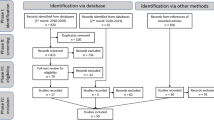Abstract
Virtual reality (VR) technologies are increasingly used in workforce development and training, and studies show they can be effective tools to increase learning of procedural skills, content knowledge, and affective outcomes like confidence. Most studies of VR in education and training, however, have focused on the hardware by comparing learning with VR to other devices in controlled lab experiments. This “black box” approach does not attend to variation beyond the device, such as how learners use an application and the influence of their identity and context on their learning with VR. This study addressed the need for more research on learning with VR in authentic workforce development contexts to better understand how diverse participants use these programs and to what extent their individual characteristics impact their experience. Using data from 1,154 users of a VR-enabled job interview training for individuals affected by the criminal justice system, we assessed variation in how participants used the program and their reported changes in confidence, and estimated associations with device, usage, and learners’ characteristics. We find learners’ experience and context is a stronger predictor of increased confidence level than device or usage activities, particularly whether participants are currently or formerly incarcerated. Further, we demonstrate how cluster analysis on log-file data can distinguish learners’ use patterns, a promising method for personalizing feedback and training.
Access this chapter
Tax calculation will be finalised at checkout
Purchases are for personal use only
Similar content being viewed by others
References
Xie, B., et al.: A review on virtual reality skill training applications. Fron. Virtual Reality 2 (2021). https://doi.org/10.3389/frvir.2021.645153
Abich, J., Parker, J., Murphy, J.S., Eudy, M.: A review of the evidence for training effectiveness with virtual reality technology. Virtual Reality 25, 919–933 (2021). https://doi.org/10.1007/s10055-020-00498-8
Jun, H., Miller, M.R., Herrera, F., Reeves, B., Bailenson, J.N.: Stimulus sampling with 360-videos: examining head movements, arousal, presence, simulator sickness, and preference on a large sample of participants and videos. IEEE Trans. Affect. Comput. 13, 1416–1425 (2022). https://doi.org/10.1109/TAFFC.2020.3004617
Nakamura, L.: Feeling good about feeling bad: virtuous virtual reality and the automation of racial empathy. J. Vis. Cult. 19, 47–64 (2020). https://doi.org/10.1177/1470412920906259
Hamilton, D., McKechnie, J., Edgerton, E., Wilson, C.: Immersive virtual reality as a pedagogical tool in education: a systematic literature review of quantitative learning outcomes and experimental design. J. Comput. Educ. 8, 1–32 (2021). https://doi.org/10.1007/s40692-020-00169-2
Radianti, J., Majchrzak, T.A., Fromm, J., Wohlgenannt, I.: A systematic review of immersive virtual reality applications for higher education: design elements, lessons learned, and research agenda. Comput. Educ. 147 (2020)
Wu, B., Yu, X., Gu, X.: Effectiveness of immersive virtual reality using head-mounted displays on learning performance: a meta-analysis. Br. J. Edu. Technol. 51, 1991–2005 (2020). https://doi.org/10.1111/bjet.13023
Smith, M.J., et al.: Virtual reality job interview training for adults receiving prison-based employment services: a randomized controlled feasibility and initial effectiveness trial. Crim. Justice Behav. 50, 272–293 (2023). https://doi.org/10.1177/00938548221081447
Jensen, L., Konradsen, F.: A review of the use of virtual reality head-mounted displays in education and training. Educ. Inf. Technol. 23, 1515–1529 (2018). https://doi.org/10.1007/s10639-017-9676-0
Fishman, B., Dede, C.: Teaching and technology: new tools for new times. In: Gitomer, D.H., Bell, C.A. (eds.) Handbook of Research on Teaching, pp. 1269–1334. American Educational Research Association (2016). https://doi.org/10.3102/978-0-935302-48-6_21
Johnson-Glenberg, M.C., Bartolomea, H., Kalina, E.: Platform is not destiny: embodied learning effects comparing 2D desktop to 3D virtual reality STEM experiences. J. Comput. Assist. Learn. 37, 1263–1284 (2021). https://doi.org/10.1111/jcal.12567
Parong, J., Mayer, R.: Learning science in immersive virtual reality. J. Educ. Psychol. 110 (2018). https://doi.org/10.1037/edu0000241
Georgiou, Y., Tsivitanidou, O., Ioannou, A.: Learning experience design with immersive virtual reality in physics education. Educ. Technol. Res. Dev. 69, 3051–3080 (2021). https://doi.org/10.1007/s11423-021-10055-y
Park, N., Tietjen, G.: “It’s not a conversation starter.” Or is it?: stigma management strategies of the formerly incarcerated in personal and occupational settings. J. Qualita. Crimi. Just. Criminol. (2021). https://doi.org/10.21428/88de04a1.df4b4cc7
Huang, Z.: Extensions to the k-means algorithm for clustering large data sets with categorical values. Data Min. Knowl. Disc. 2, 283–304 (1998). https://doi.org/10.1023/A:1009769707641
Acknowledgment
We are grateful for the assistance of Anna Kornick, Tony Worlds, and Charles Fatunbi from Accenture, and Jennifer Lynch and Kristin Pratt from Goodwill Industries International for making this study possible. This work was developed with funding from Goodwill Industries International in connection with the Next Level Lab at the Harvard Graduate School of Education, which is funded by Accenture Corporate Giving. The opinions here are those of the authors and do not necessarily reflect the views of the funder.
Author information
Authors and Affiliations
Corresponding author
Editor information
Editors and Affiliations
Rights and permissions
Copyright information
© 2024 The Author(s), under exclusive license to Springer Nature Switzerland AG
About this paper
Cite this paper
McGivney, E., Forshaw, T., Medeiros, R., Sun, M., Grotzer, T. (2024). Opening the “Black Box” of VR for Workforce Development: Investigating Learners’ Device, Usage, and Identities. In: Bourguet, ML., Krüger, J.M., Pedrosa, D., Dengel, A., Peña-Rios, A., Richter, J. (eds) Immersive Learning Research Network. iLRN 2023. Communications in Computer and Information Science, vol 1904. Springer, Cham. https://doi.org/10.1007/978-3-031-47328-9_32
Download citation
DOI: https://doi.org/10.1007/978-3-031-47328-9_32
Published:
Publisher Name: Springer, Cham
Print ISBN: 978-3-031-47327-2
Online ISBN: 978-3-031-47328-9
eBook Packages: Computer ScienceComputer Science (R0)




